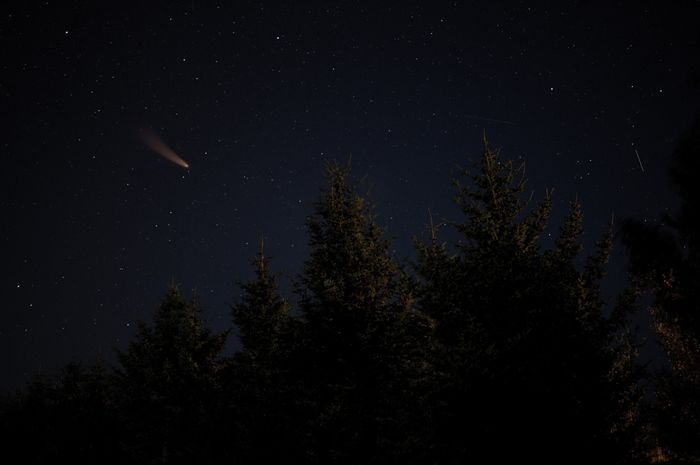But don't worry, it won't get too close.
The asteroid, officially known by NASA as 231937 (2001 F032), is about 1,300 to 2,230 feet wide, according to observations made by the NEOWISE team, putting it at the smaller end of the scale. It has an orbit period of 810 days.
The asteroid is smaller than the last notable one to make a close approach to Earth, but it will be three times closer, NASA said in a statement Thursday.
2001 F032 is set to come within 1.25 million miles of Earth at 11:02 AM. ET on March 21, just one day after the spring equinox.
That's close enough for NASA to classify it as "potentially hazardous" in its database of near-Earth asteroids, a designation is given when they come within about 4.65 million miles of Earth and are larger than 500 feet in diameter.
This diagram depicts the elongated and inclined orbit of 2001 FO32 as it travels around the Sun (white ellipse).
Because of this orbit, when the asteroid makes its close approach to Earth, it will be traveling at an unusually fast speed of 77,000 mph.
Baca Juga: Jawab Soal Materi Bahasa Inggris Kelas XII, Mid-Term Test 2 No. 12-15
It will zoom past at almost 77,000 miles per hour, or 21 miles per second-peaking scientists' interests as one of the fastest space rocks known to fly past Earth.
The asteroid is "unusually speedy" due to its highly inclined and elongated orbit around the Sun, which makes it closer to the Sun than Mercury and twice as far from the Sun as Mars.
"This is the closest predicted approach in 2021 for any moderately large asteroid, where 'moderately large' means at least several hundred meters in size, Paul Chodas, the Director of the Center for Near-Earth Object Studies, told CBS News.
However, it poses no risk of impact, and scientists know its path very accurately, having studied it for about two decades.
| Penulis | : | Aldita Prafitasari |
| Editor | : | Aisha Amira |

KOMENTAR